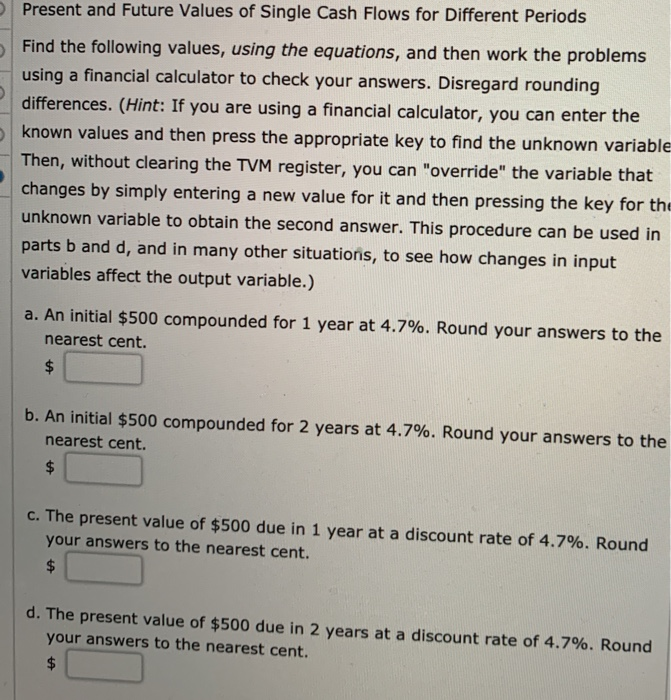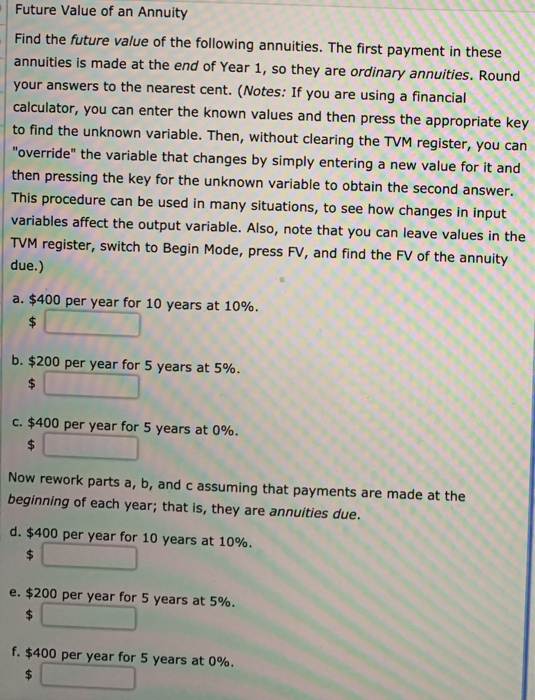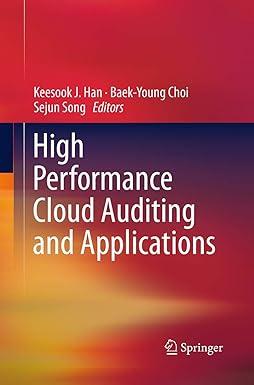Present and Future Values of Single Cash Flows for Different periods Find the following values, using the equations, and then work the problems using a financial calculator to check your answers. Disregard rounding differences. (Hint: If you are using a financial calculator, you can enter the known values and then press the appropriate key to find the unknown variable Then, without clearing the TVM register, you can "override" the variable that changes by simply entering a new value for it and then pressing the key for the unknown variable to obtain the second answer. This procedure can be used in parts b and d, and in many other situations, to see how changes in input variables affect the output variable.) a. An initial $500 compounded for 1 year at 4.7%. Round your answers to the nearest cent. b. An initial $500 compounded for 2 years at 4.7%. Round your answers to the nearest cent. c. The present value of $500 due in 1 year at a discount rate of 4.7%. Round your answers to the nearest cent. d. The present value of $500 due in 2 years at a discount rate of 4.7%. Round your answers to the nearest cent. Present and Future Values of Single Cash Flows for Different Interest Rates Use both the TVM equations and a financial calculator to find the following values. Round your answers to the nearest cent. (Hint: Using a financial calculator, you can enter the known values and then press the appropriate key to find the unknown variable. Then, without clearing the TVM register, you can "override" the variable that changes by simply entering a new value for it and then pressing the key for the unknown variable to obtain the second answer. This procedure can be used in parts b and d, and in many other situations, to see how changes in input variables affect the output variable.) a. An initial $200 compounded for 10 years at 5.9 percent. b. An initial $200 compounded for 10 years at 11.8 percent. c. The present value of $200 due in 10 years at a 5.9 percent discount rate. d. The present value of $200 due in 10 years at a 11.8 percent discount rate. Future Value of an Annuity Find the future value of the following annuities. The first payment in these annuities is made at the end of Year 1, so they are ordinary annuities. Round your answers to the nearest cent. (Notes: If you are using a financial calculator, you can enter the known values and then press the appropriate key to find the unknown variable. Then, without clearing the TVM register, you can "override" the variable that changes by simply entering a new value for it and then pressing the key for the unknown variable to obtain the second answer. This procedure can be used in many situations, to see how changes in input variables affect the output variable. Also, note that you can leave values in the TVM register, switch to Begin Mode, press FV, and find the FV of the annuity due.) a. $400 per year for 10 years at 10%. $ b. $200 per year for 5 years at 5%. c. $400 per year for 5 years at 0%. Now rework parts a, b, and c assuming that payments are made at the beginning of each year, that is, they are annuities due. d. $400 per year for 10 years at 10%. e. $200 per year for 5 years at 5%. f. $400 per year for 5 years at 0%









